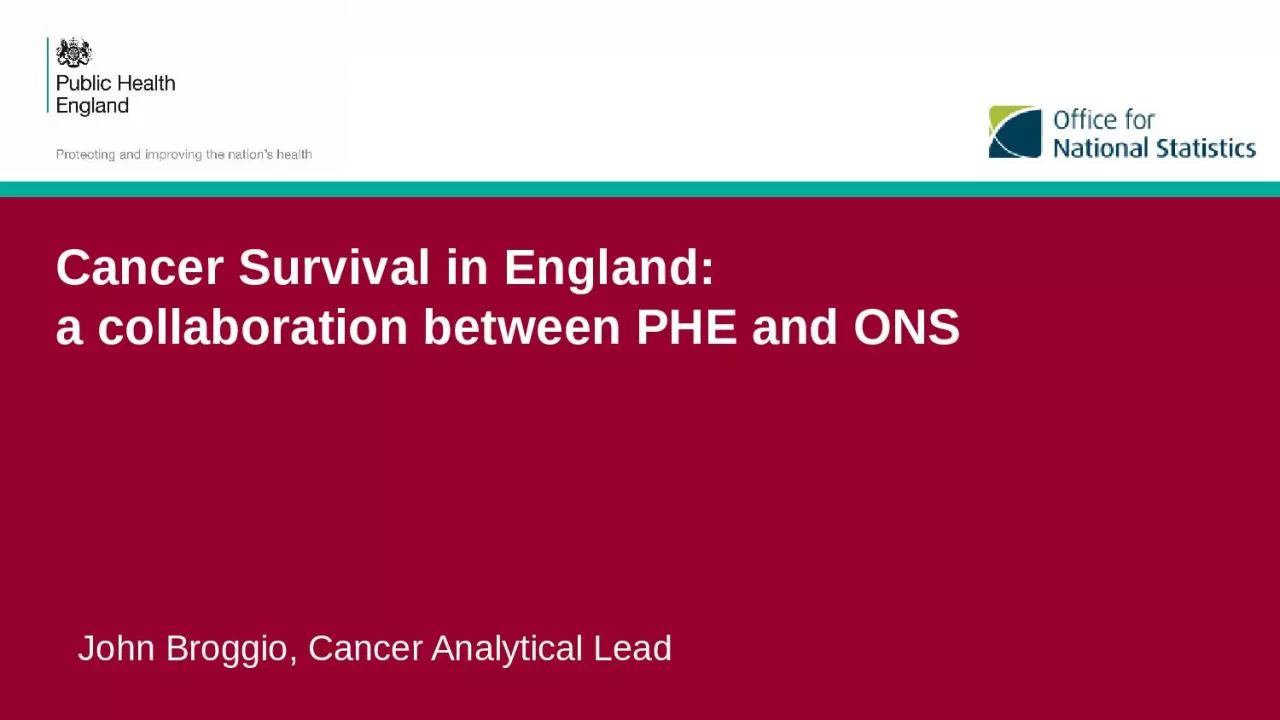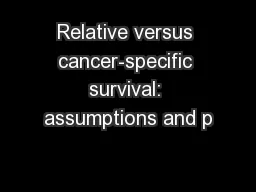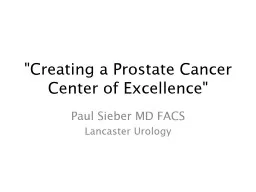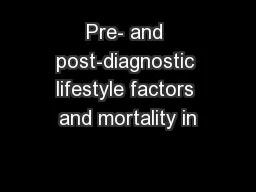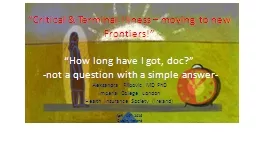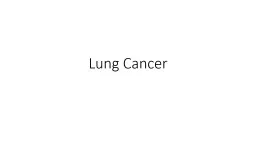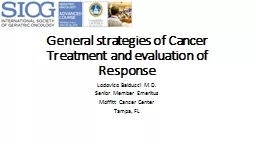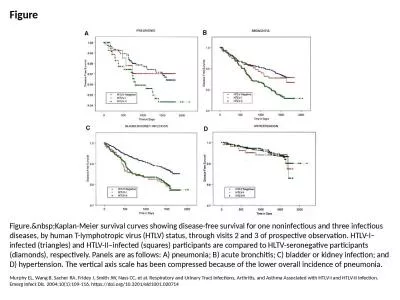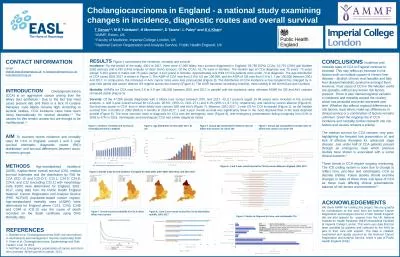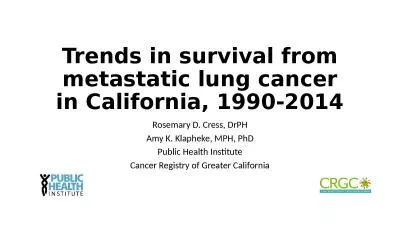PPT-Cancer Survival in England:
Author : hadley | Published Date : 2024-01-29
a collaboration between PHE and ONS John Broggio Cancer Analytical Lead What is cancer survival 2 Cancer survival in England John Broggio A statistic that measures
Presentation Embed Code
Download Presentation
Download Presentation The PPT/PDF document "Cancer Survival in England:" is the property of its rightful owner. Permission is granted to download and print the materials on this website for personal, non-commercial use only, and to display it on your personal computer provided you do not modify the materials and that you retain all copyright notices contained in the materials. By downloading content from our website, you accept the terms of this agreement.
Cancer Survival in England:: Transcript
a collaboration between PHE and ONS John Broggio Cancer Analytical Lead What is cancer survival 2 Cancer survival in England John Broggio A statistic that measures the mortality of cancer patients compared to the mortality of the general population . Tony Travers. London School of Economics. The government of England. UK Parliament and government is England’s Parliament and government. Failure of efforts to solve ‘West Lothian’ problem. Blair government’s English regional policy. ANNUAL CONFERENCE. Friday 20 September 2013. Stadium of Light . Colorectal Cancer. Mr Talvinder Singh Gill. Colorectal NSSG Chair . North of England Cancer Network Annual Conference. 20 September 2013. . Diana Sarfati. 1. , . Matt . Soeberg. 1. , Kristie Carter. 1. , Neil . Pearce. 2. , . Tony Blakely. 1. . . 1. University of . Otago. Wellington, New Zealand . 2. Centre for Public Health Research, Massey University. Paul . Sieber. MD FACS. Lancaster Urology. ADT Clinic. Why . 1. Consistency of care . . 2. Improved outcomes. . 3. Better economics. What does it take. 1. Discipline. I. ncluding . The Will Roger’s . Phenomenon. H. James Norton & George W. Divine. norton100@bellsouth.net. Website: . www.jimnortonphd.com. . Paradoxes, by their very nature, can be interesting to students.. Mona Jeffreys. School of Social and Community Medicine. Breast cancer. Most common cancer in women in UK. Affects approximately 50,000 women in UK each year. 85.1% of patients survive for five years or more (diagnosed 2005-2009). Element. :. . Identify the causes and results of the revolutions in England (1689). , United States (1776), France (1789), Haiti (1791), and Latin America (1808-1825). Vocabulary. : English Revolution, Glorious Revolution. “How long have I got, doc?”. . -not . a question with a simple . answer-. Aleksandra Filipovic MD PhD. Imperial College London. Health Insurance Society (Ireland). . April 14. th. 2016. Dublin, Ireland. TARA SEERY, MD. Pancreatic cancer. Pancreatic Cancer: Challenges. Stage for stage, pancreatic cancer is associated with the lowest survival rates of any major cancer type. The vast majority of patients are inoperable at the time of diagnosis. Reasons why lung cancer survival is still variable and poor?. Late presentation . Deprivation (not just smoking, but mainly). Lack of advocacy & research. Stigma. Access to staff,diagnostics and treatment. Lodovico Balducci M.D.. Senior Member Emeritus. Moffitt Cancer Center. Tampa, FL. Clinical Case. 83 year old man with cough. CT chest reveals a 3 cm mass Left Lower Lobe. Biopsy reveals an adenocarcinoma primary lung. Murphy EL, Wang B, Sacher RA, Fridey J, Smith JW, Nass CC, et al. Respiratory and Urinary Tract Infections, Arthritis, and Asthma Associated with HTLV-I and HTLV-II Infection. Emerg Infect Dis. 2004;10(1):109-116. https://doi.org/10.3201/eid1001.020714. 2. , H Morement. 1. , D Tataru. 3. , L Paley. 3. and . S A Khan. 2 . 1. AMMF, Essex, UK. 2 . Faculty of Medicine, Imperial College London, UK. 3 . National Cancer Registration and Analysis Service, . . Rosemary D. Cress, . DrPH. Amy K. Klapheke, MPH, PhD. Public Health Institute. Cancer Registry of Greater California. Introduction. Lung cancer incidence in California has declined steadily thanks to reduction in smoking.
Download Document
Here is the link to download the presentation.
"Cancer Survival in England:"The content belongs to its owner. You may download and print it for personal use, without modification, and keep all copyright notices. By downloading, you agree to these terms.
Related Documents

